2020 has seen a significant spike in yoga’s popularity worldwide. The lockdown helped millions of people discover this restorative practice. According to statistics, 36 million Americans are practicing yoga now. Meanwhile, 72% of yoga practitioners are women. And that means men have to learn to appreciate yoga balance better.
Yoga is a universal tool of a sound body and a peaceful mind. At the tie of a crisis, both personal and international, many people find solace in yoga and remain balanced with regular practice. While yoga will not “flush your toxins,” as the old-fashioned ads would say, it will bring numerous other benefits to your body!
What Yoga Does to Your Body
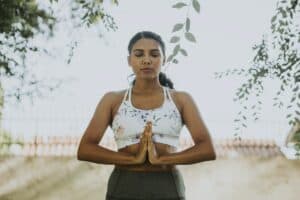 Besides connecting you to the millennia-old tradition and guiding your spiritual journey, yoga has several physical benefits that would do some good for everybody with a sedentary lifestyle.
Besides connecting you to the millennia-old tradition and guiding your spiritual journey, yoga has several physical benefits that would do some good for everybody with a sedentary lifestyle.
The combination of stretches and active movements of hatha yoga works wonders for back pain. The studies show that after only 6 to 12 sessions, participants feel relief from back pain. Also, yoga stretches contribute to the general flexibility of our bodies. Stretching your hamstrings is the primary reason for back pain relief as they often can pull too tight on your hip flexors.
Which Yoga Is Best For Flexibility?
Meditation is not purely a spiritual concept. It bears physical benefits as well. Around two to three months of meditative activity drastically lower c-reactive proteins, which significantly lowers inflammation. Today, researchers study meditation’s influence on the central nervous system and its stress hormone responses and the impact of oxytocin, also known as the “hormone of love.”
Among the benefits of regular moderate exercises are better sleep, reduced stress and anxiety, elevated mood and self-esteem.
Yoga Balance Poses
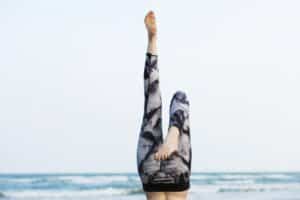 Now, let’s talk about the thing that many beginner yogi struggle with the most – balance yoga.
Now, let’s talk about the thing that many beginner yogi struggle with the most – balance yoga.
Balance and good coordination are our partners when it comes to regular life and physical activities alike. Without them, falling will become your second nature. And the surest way to improve them is through practice. And yoga offers enough of that.
Do not be mistaken – practicing balance in yoga does not stop on the tree pose. The practice encompasses a few dozens of balance poses, which also have individual variations. Today, we’ll take a look at the most effective and fun balance poses to do.
Tree Pose (Vrikshasana)
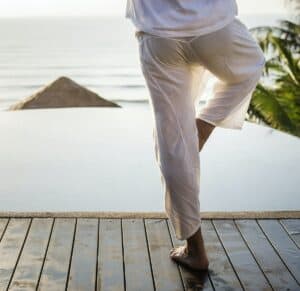 Okay, this is the infamous tree pose, Vrksasana, the basis of all balancing training. It is an effective beginner-friendly pose; that is why it is so popular. It’s easy to do and suitable for the start of your practice.
Okay, this is the infamous tree pose, Vrksasana, the basis of all balancing training. It is an effective beginner-friendly pose; that is why it is so popular. It’s easy to do and suitable for the start of your practice.
How to do:
- from mountain pose, bend the right knee and swing it right
- place its heel to the left upper inner thigh
- brings the hand together in prayer position
- stabilize
Warrior III
While everybody who’s started yoga sessions is well acquainted with Warrior I and II, it’s time to learn the third type of these yoga balance poses crucial for this practice. It’s named after the fierce warrior Virabhadra. The first two types are beginner-friendly balancing training, and this one is more advanced.
Warrior 2 Pose (Virabhadrasana 2)
How to do:
- start from the high lunge, torso and hands down on the right thigh
- stretch your arms parallel and forward (make sure the back leg is strong)
- strengthen the front knee and lift the back leg up while slightly inclining the torso forward.
Make sure arms, torso, and legs are as parallel to the floor as much as possible. Bring your look forward but don’t compress the neck.
Dancer
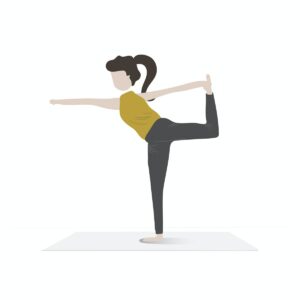 The Dancer pose is high-level training for your balance skills. Natarajasana is suitable for intermediate yoga practitioners and involves a fair bit of stretching. As a newbie, you won’t be able to do it to the full extent.
The Dancer pose is high-level training for your balance skills. Natarajasana is suitable for intermediate yoga practitioners and involves a fair bit of stretching. As a newbie, you won’t be able to do it to the full extent.
How to do:
- bend the left leg in the knee
- reach back with your left hand to grasp the ankle from inside
- start to raise your left thigh behind and up while
- reach the right hand forward
- stabilize
Ensure your thighs are straight, your neck is long and beautiful, and the weight is evenly distributed, engaging the big toe mound.
Half Moon (Ardha Chandrasana)
Alongside the tree pose, half-moon is probably the best-known balancing training in yoga. Ardha Chandrasana bears great significance in the practice as the moo symbol represents human body energy.
How to do:
- from the high lunge, step into the right foot and strengthen the legs.
- place the left hand under the shoulder on the floor
- rise the right leg parallel to the floor
- put the right arm on your hip
- rotate hips up and back to the left
- move right fingertip up and high to the ceiling
To release, slowly bring both hands to the floor and then lower the leg. Beginners new to this one leg yoga pose are recommended to keep the hand on the hip.
Eagle Pose
Garudasana not only improves your balance but also increases flexibility. Besides, this twisted pose looks like fun but requires strength and concentration.
How to do:
- stand in a mountain pose
- shift your weight to the right leg
- lift your left foot
- put the left high across the right
- (if you can reach, place the top of the left foot behind the right calf)
- bring your hands high and twist them around each other (wrap right over left) can connect palms
- lift your elbows and fingers up to the ceiling
Standing/Extended Hand to Toe
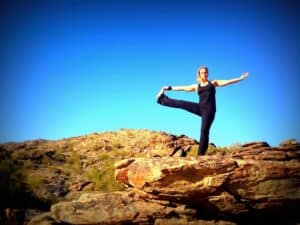 This is one of the most effective yoga standing balance poses, you’ll need to bring in all your balance and flexibility skills. Remember to ground through the standing foot and keep your gaze forward.
This is one of the most effective yoga standing balance poses, you’ll need to bring in all your balance and flexibility skills. Remember to ground through the standing foot and keep your gaze forward.
How to do:
- from Tadasana (mountain pose), lift your left knee to the belly
- reach your left arm in front of the ankle and hold outside of your foot
- extend the leg forward and up, straighten the knee
- if your hamstrings allow, bring the leg to the side
If your hamstrings are tight, practice this pose with a yoga strap.
All these exercises are meant to improve your balance, flexibility, and strength. Most of them require lower body strength that you can gain via these lunges exercises.